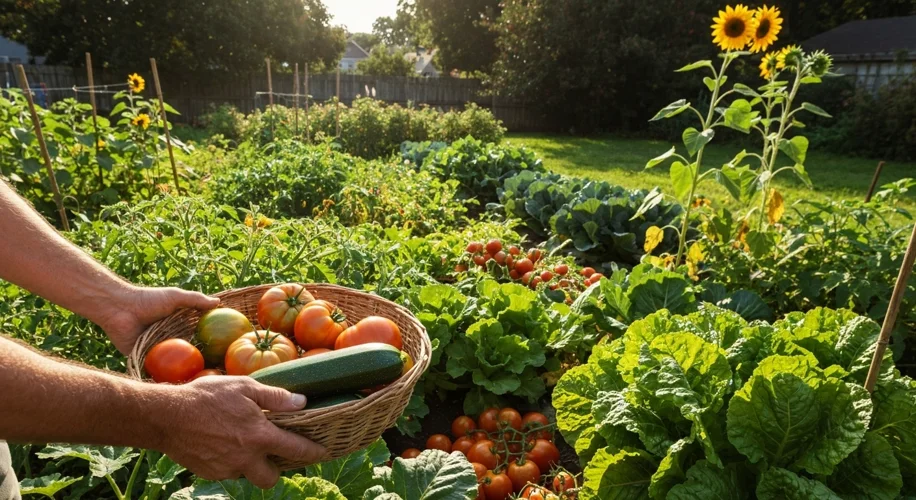It’s August 22nd, 2025, and looking out at my suburban backyard, it’s hard to believe it’s been a full year since I started this garden journey.
This time last year, I was just dreaming about fresh tomatoes and crisp lettuce. Now, my backyard is a vibrant tapestry of green, buzzing with pollinators and ripe for harvesting. It’s been a learning experience, to say the least, and I want to share what a year in the life of a suburban vegetable garden really looks like.
Spring: The Promise of Growth
As soon as the last frost warnings were over, my hands were in the soil. The first step was preparing the beds. I focus a lot on soil health, and that means composting. Turning kitchen scraps and yard waste into rich, dark compost is incredibly rewarding. I amended my garden beds with this compost, giving my plants the best possible start. Then came the seeds. Starting some indoors, like tomatoes and peppers, gave them a head start. Others, like carrots and beans, went straight into the ground once the soil was warm enough.
Spring is a time of hope and a bit of anxiety. You’re constantly checking for germination, protecting tender seedlings from late frosts, and keeping an eye out for early pests.
Summer: The Peak of Abundance
Summer is when the garden truly comes alive. Everything is growing rapidly, and the first harvests begin. The taste of a tomato picked straight from the vine, still warm from the sun, is unbeatable. I’ve learned to succession plant, meaning I sow new seeds every few weeks, to ensure a continuous harvest of things like lettuce and radishes. This year, my zucchini plants were particularly prolific – a common gardener’s tale!
Dealing with pests is a constant. I prefer organic methods, like using companion planting and attracting beneficial insects. For example, marigolds are planted throughout the garden to deter nematodes. If I do find aphids, a strong blast of water or a gentle insecticidal soap usually does the trick.
Autumn: The Harvest and the Wind-Down
As the days get shorter, the focus shifts to preserving the bounty. Canning, pickling, and freezing are all part of the process. It’s about making sure the goodness of the summer harvest lasts through the leaner months. My favorite part of autumn is clearing out the spent plants, giving the soil a final dose of compost, and planting a cover crop like rye. This protects the soil over winter and enriches it for the following spring.
Year-Round Lessons
Gardening isn’t just about the food; it’s about the connection to nature, the satisfaction of nurturing something from seed to supper, and the delicious rewards. It’s taught me patience, resilience, and the simple beauty of the natural cycle. Even in the quiet of winter, I’m planning for next year, poring over seed catalogs and dreaming of what I’ll grow.
If you’ve ever thought about starting a vegetable garden, no matter how small, I encourage you to give it a try. Your suburban backyard has the potential for so much more than just grass!

